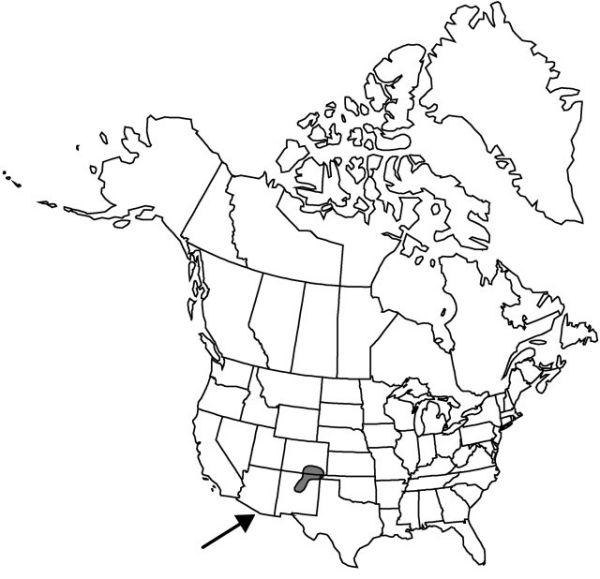Difference between revisions of "Yucca neomexicana"
Contr. U.S. Natl. Herb. 16: 115. 1913.
FNA>Volume Importer |
imported>Volume Importer |
||
| (3 intermediate revisions by 2 users not shown) | |||
| Line 6: | Line 6: | ||
|place=16: 115. 1913 | |place=16: 115. 1913 | ||
|year=1913 | |year=1913 | ||
| + | }} | ||
| + | |special_status={{Treatment/ID/Special_status | ||
| + | |code=E | ||
| + | |label=Endemic | ||
}} | }} | ||
|basionyms= | |basionyms= | ||
| Line 11: | Line 15: | ||
|name=Yucca harrimaniae var. neomexicana | |name=Yucca harrimaniae var. neomexicana | ||
|authority=(Wooton & Standley) Reveal | |authority=(Wooton & Standley) Reveal | ||
| + | |rank=variety | ||
}} | }} | ||
|hierarchy=Agavaceae;Yucca;Yucca neomexicana | |hierarchy=Agavaceae;Yucca;Yucca neomexicana | ||
| Line 35: | Line 40: | ||
-->{{#Taxon: | -->{{#Taxon: | ||
name=Yucca neomexicana | name=Yucca neomexicana | ||
| − | |||
|authority=Wooton & Standley | |authority=Wooton & Standley | ||
|rank=species | |rank=species | ||
| Line 49: | Line 53: | ||
|publication title=Contr. U.S. Natl. Herb. | |publication title=Contr. U.S. Natl. Herb. | ||
|publication year=1913 | |publication year=1913 | ||
| − | |special status= | + | |special status=Endemic |
| − | |source xml=https:// | + | |source xml=https://bitbucket.org/aafc-mbb/fna-data-curation/src/2e0870ddd59836b60bcf96646a41e87ea5a5943a/coarse_grained_fna_xml/V26/V26_901.xml |
|genus=Yucca | |genus=Yucca | ||
|species=Yucca neomexicana | |species=Yucca neomexicana | ||
Latest revision as of 22:18, 5 November 2020
Plants cespitose, forming single or open colonies, each separated by 35–60 cm, acaulescent or rarely caulescent; rosettes usually small, mostly asymmetrical. Stems, when present, primarily rhizomatous, shorter than 1 m. Leaf blade spreading, including distal leaves, spatulate-lanceolate, concavo-convex, thin, widest near middle, 15–46 × 0.7–2 cm, flexible, rather glaucous, margins entire, filiferous, brown or straw-colored. Inflorescences racemose, rarely paniculate proximally, arising within or more often 0–20 cm beyond rosettes, 4–7 dm; branches, when present, few, short; bracts reflexed when mature, purplish, narrowly triangular, proximal to 10 cm, distal 2–3 cm, tapering to pungent apex; peduncle sometimes scapelike, 0.1–0.4 m. Flowers pendent; perianth campanulate; tepals distinct, white to somewhat greenish white, usually tinged pink or purple, broadly lanceolate, 3–4.7 × 1.5–3 cm; filaments 1.3–1.7 cm; pistil 2.4–3.2 cm × 0.5–0.8 cm; style pale green or rarely white, 9–13 mm; stigmas lobed. Fruits erect, capsular, dehiscent, cylindrical, deeply constricted near middle, 3–4.2 × 2–2.7 cm, dehiscence septicidal. Seeds dull black, thin, 6–8 × 5–8 mm.
Phenology: Flowering spring–early summer.
Habitat: Exposed rocky ledges in woodlands and grasslands
Elevation: 1500–2700 m
Distribution

Colo., N.Mex., Okla.
Discussion
Although J. L. Reveal (1977c) reduced Yucca neomexicana to a variety of Y. harrimaniae, the two taxa are morphologically and geographically distinct, and K. H. Clary’s (1997) DNA evidence supports their recognition as separate species.
Selected References
None.